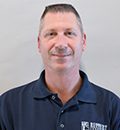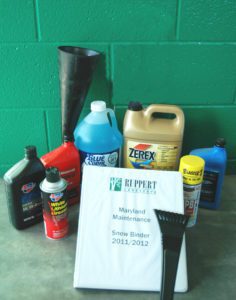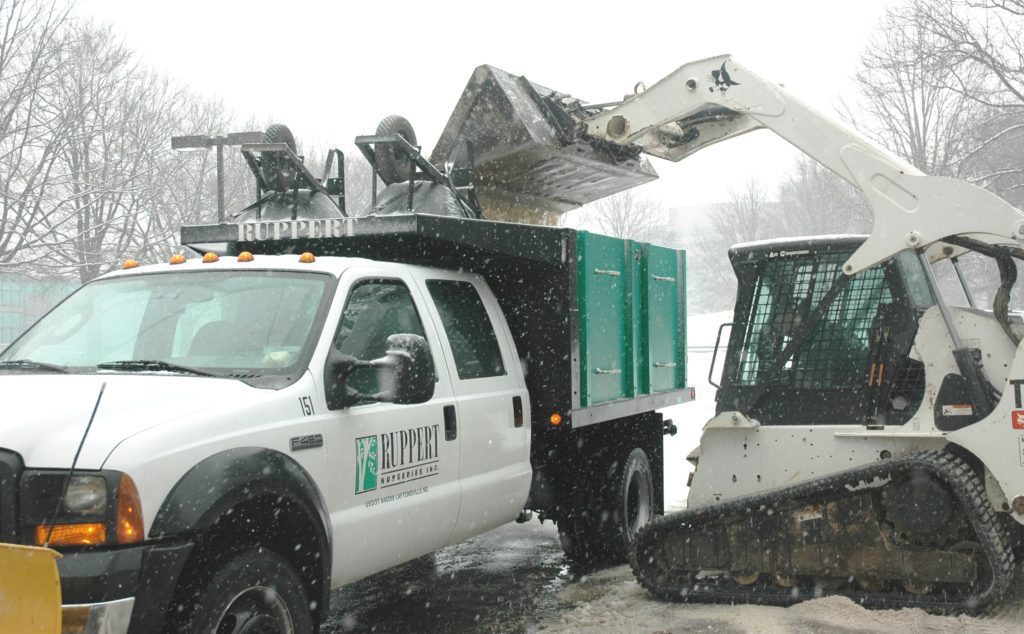By Reid Altavilla, Corporate Fleet Manager
 When it comes to the winter season and impending snow events, we strive to be proactive instead of reactive. In order to serve our customers to the best of our ability and make sure that all of our snow equipment is in top operating condition, our branch operations, with the support of their shop and the fleet team, take special precautionary measures:
When it comes to the winter season and impending snow events, we strive to be proactive instead of reactive. In order to serve our customers to the best of our ability and make sure that all of our snow equipment is in top operating condition, our branch operations, with the support of their shop and the fleet team, take special precautionary measures:
 We conduct snow training events we call “rodeos” well in advance of the first snow event—hooking up all snow plows, salt spreaders, and sanders to our trucks to ensure that they are operating properly and test them at the branches to help the operators learn and or remember the proper way to hook up their snow equipment.
We conduct snow training events we call “rodeos” well in advance of the first snow event—hooking up all snow plows, salt spreaders, and sanders to our trucks to ensure that they are operating properly and test them at the branches to help the operators learn and or remember the proper way to hook up their snow equipment.- We put together snow supply boxes for each of our plow trucks—these include plow fluid, transmission fluid, oil, snow plow hoses, ice scrapers, windshield washer fluid, and other items that our plow crews might need in a snow event that will minimize downtime and enable operators to be as efficient as possible when out at our customers’ sites.
Pictured right: Typical contents for a snow box, prepared in conjunction with your shop manager, include: snow binder, windshield wiper fluid, antifreeze, transmission fluid, motor oil, hydraulic fluid, WD40 lubricant, white lithium grease, windshield de-icer and scraper, funnel, an assortment of fuses and a loaded grease gun.
The second element of success is doing our due diligence after a snow event.
 Once our trucks and equipment have finished working a storm, they come back to our facilities and are thoroughly cleaned and inspected before being put away—each branch must ensure that all trucks and snow equipment are pressure washed and all grease points are hit.
Once our trucks and equipment have finished working a storm, they come back to our facilities and are thoroughly cleaned and inspected before being put away—each branch must ensure that all trucks and snow equipment are pressure washed and all grease points are hit.- When broken equipment is discovered, branches are required to write up a maintenance request in order to have it properly repaired and ready for the next storm—our shop personnel work hard to stock the necessary parts that are needed to properly repair snow equipment quickly without tying up too much inventory.
The final step in our process is to test all snow equipment again when we hook everything up to prepare for the next snow event. Even though we put it away working, it is always a best practice to hook it back up and retest before the next snow event. By taking these steps before and after each storm, we can ensure that we are prepared to take on whatever winter has in store for us.
 We conduct snow training events we call “rodeos” well in advance of the first snow event—hooking up all snow plows, salt spreaders, and sanders to our trucks to ensure that they are operating properly and test them at the branches to help the operators learn and or remember the proper way to hook up their snow equipment.
We conduct snow training events we call “rodeos” well in advance of the first snow event—hooking up all snow plows, salt spreaders, and sanders to our trucks to ensure that they are operating properly and test them at the branches to help the operators learn and or remember the proper way to hook up their snow equipment. Once our trucks and equipment have finished working a storm, they come back to our facilities and are thoroughly cleaned and inspected before being put away—each branch must ensure that all trucks and snow equipment are pressure washed and all grease points are hit.
Once our trucks and equipment have finished working a storm, they come back to our facilities and are thoroughly cleaned and inspected before being put away—each branch must ensure that all trucks and snow equipment are pressure washed and all grease points are hit.